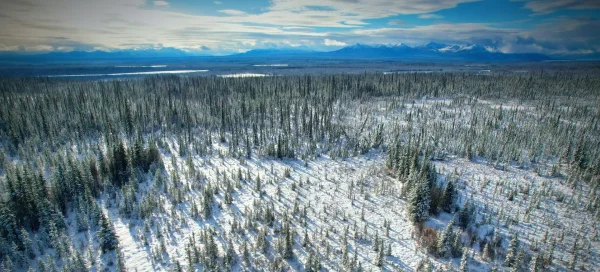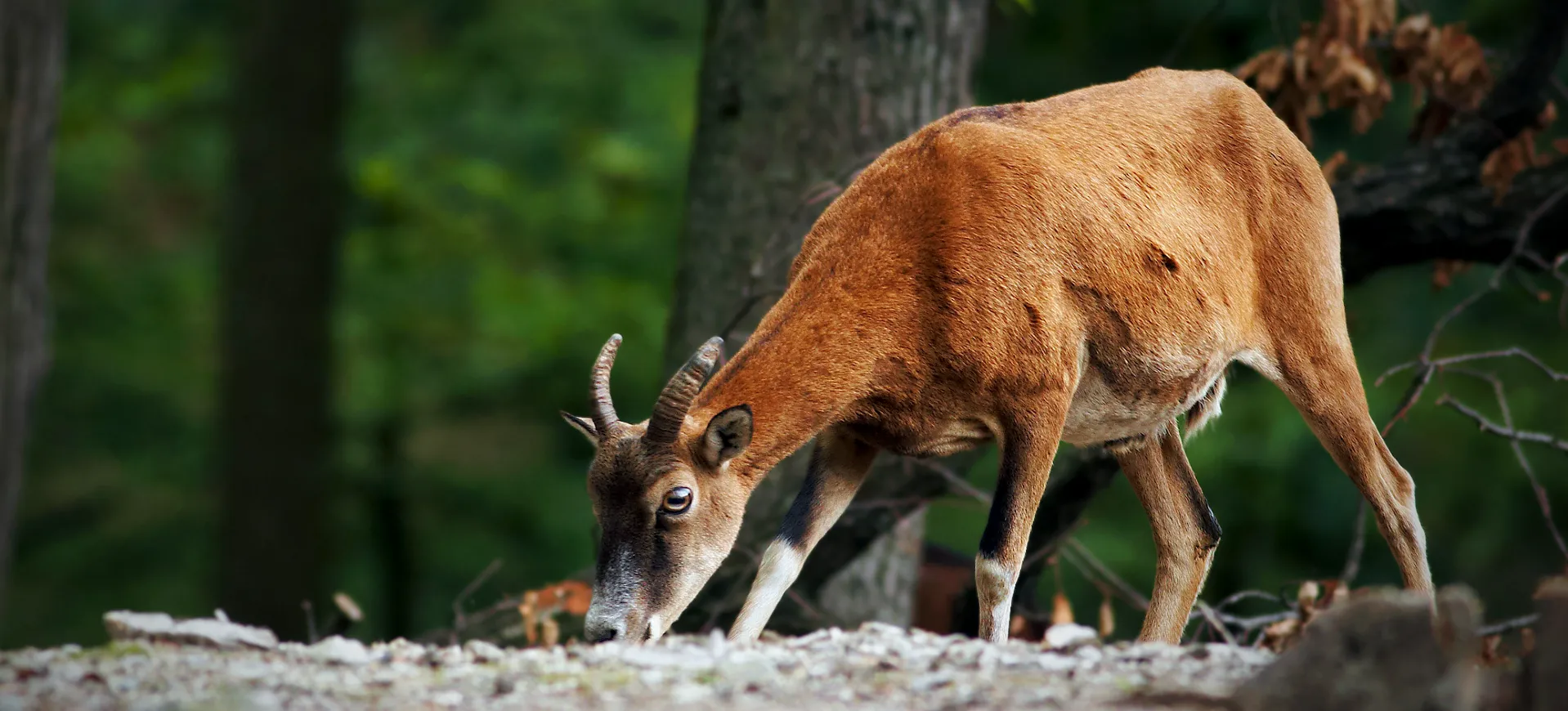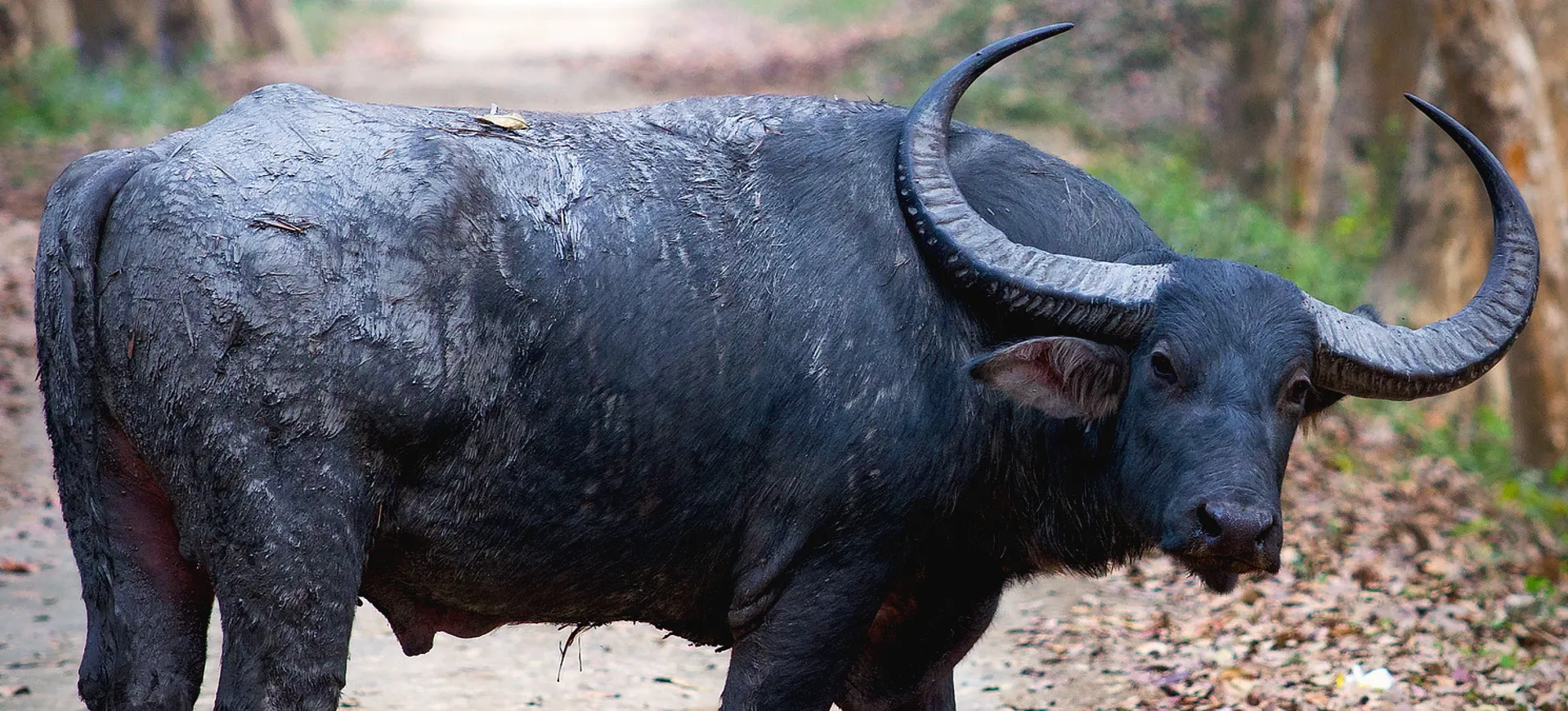Overview
The Plains Bison, also known as (Bison bison bison), is a subspecies of the American Bison that once roamed North America in vast herds. These majestic animals are characterized by their large size, shaggy dark brown winter coats, and massive heads with short, curved horns. Plains Bison play a critical role in the grassland ecosystem, acting as keystone species by influencing the structure of plant communities and creating habitats for other species. Despite their near-extinction due to overhunting and habitat loss in the late 19th and early 20th centuries, conservation efforts have helped their populations recover, although they still face challenges.
Plains Bison are social animals, forming groups called herds, which can vary in size from a few individuals to several hundred. These herds are generally matriarchal, led by older females, and have complex social structures. The bison’s diet primarily consists of grasses, and thanks to their powerful digestive systems, they are known for their ability to graze in areas where other herbivores might struggle. Their grazing habits benefit the maintenance of healthy grasslands, promoting biodiversity.
In winter, Plains Bison use their strong necks and heads to move snow aside and access the grass beneath, showcasing their adaptability to harsh environments. This ability to forage through snow allows them to survive in areas where other herbivores cannot. The presence of bison in a landscape can increase the diversity of plant and animal communities, making them integral to grassland health and restoration efforts. Their historic migrations and grazing patterns have shaped the ecology of the Great Plains for thousands of years, underlining their importance in North American natural history.
Taxonomy
Kingdom
Phylum
Class
Order
Family
Genus
Species
Sub Species
Type
Physical Description:
Plains Bison are distinguished by their massive size, with males (bulls) significantly larger than females (cows). They have a characteristic hump on their shoulders, which is more pronounced in males and is composed of muscle supported by long vertebrae. The fur of the Plains Bison varies seasonally; they have a thicker, darker coat in the winter to keep warm, which they shed in the summer for a lighter brown coat. Their heads are adorned with short, black horns that curve upwards and inwards, used for defense and in mating competitions.
The size difference between males and females is notable, with bulls weighing significantly more and standing taller. Plains Bison have a thick beard and a mane around their neck and shoulders, adding to their imposing presence. Their eyes and ears are relatively small compared to their body size, with the eyes set on the sides of their head, providing a wide field of vision. The tail of a Plains Bison ends in a tuft of hair, and it is used to swat away flies and other pests.

Lifespan: Wild: ~20 Years || Captivity: ~25 Years

Weight: Male: 1,800-2,200 lbs (816-998 kg) || Female: 900-1,200 lbs (408-544 kg)

Length: Male: 108-124 in (274-315 cm) || Female: 94-110 in (239-280 cm)

Height: Male: 60-73 in (152-185 cm) || Female: 54-60 in (137-152 cm)

Top Speed: 35 mph (56 km/h)
Characteristic:
Native Habitat:
The Plains Bison originally inhabited a vast range of North America’s grasslands, from the Rocky Mountains to the Mississippi River and Canada to Mexico. Their habitat included the Great Plains, which offered abundant grasses for grazing. The landscape of the Great Plains, characterized by its flatness and wide-open spaces, provided an ideal environment for the large herds of bison to roam and feed. The presence of bison in these grasslands played a significant role in shaping the ecosystem, influencing the types of vegetation that thrived and the diversity of the animal population.
Today, the range of the Plains Bison is much reduced due to historic overhunting and habitat loss. Efforts to reintroduce and conserve bison populations have led to their presence in protected areas, national parks, and private ranches across North America. These areas attempt to mimic the natural grassland habitats that bison once freely roamed, providing them with the space and resources needed to maintain healthy populations. Conservation initiatives focus on restoring grassland ecosystems to support bison and the myriad of other species that depend on these habitats.
Climate Zones:
Biomes:
Biogeographical Realms:
Continents:
Countries:
Diet:
Diet & Feeding Habits:
Plains Bison are predominantly grazers, with a diet focused on grasses and sedges in their native grassland habitats. They possess a highly efficient digestive system that allows them to process tough cellulose, making the most of the nutrients available in their often sparse environments. The bison’s grazing patterns are not random; they prefer certain types of grasses and plants, and their feeding behavior helps maintain the grassland ecosystem’s health and diversity.
During different seasons, Plains Bison adjust their diet based on the availability of vegetation. In the spring and summer, they consume fresh, green grasses that are rich in nutrients, while in the fall and winter, they switch to more fibrous plant material that remains. Their ability to dig through snow to reach grass allows them to survive in environments where other herbivores might starve during winter. The selective grazing of the Plains Bison promotes the growth of new plant shoots, contributing to the cyclical renewal of the grasslands.
Mating Behavior:
Mating Description:
The Plains Bison’s mating season, or the rut, unfolds primarily between July and August, marking a period of heightened activity and competition among the males. Bulls exhibit aggressive behaviors such as loud bellowing, physical shoving, and head-to-head clashes to win the cows’ attention and favor. These displays of strength and dominance are crucial, as females tend to select mates who emerge victorious in these contests, ensuring that the dominant bulls sire most of the offspring in the next generation.
After successful mating, a cow’s gestation period lasts approximately nine months, culminating in the birth of usually a single calf. These calves are remarkably intelligent and can stand and walk within just a few hours of birth. This rapid development is essential for their survival, enabling the newborns to move with the herd and escape predators, thereby securing the ongoing lineage of these majestic creatures within their natural habitat.
Reproduction Season:
Birth Type:
Pregnancy Duration:
Female Name:
Male Name:
Baby Name:
Social Structure Description:
Plains Bison exhibit intricate social behaviors, organizing into herds that dynamically fluctuate in size and composition based on the season and environmental conditions. Within these herds, social segregation is common, with females (cows) and their calves forming distinct groups and males (bulls) forming separate bachelor groups for most of the year. This separation facilitates efficient feeding and breeding strategies, allowing each group to optimize its survival strategies. During the mating season, however, the dynamic shifts dramatically as males vie for dominance and the opportunity to mate, engaging in physical displays of strength that can include butting heads and powerful displays of agility and stamina.
Establishing a social hierarchy among the Plains Bison, particularly evident during the rut, or mating season, is a critical component of their life cycle. Dominant bulls earn the right to mate with multiple females, ensuring that the strongest genes are passed on to the next generation. This social structuring determines reproductive success and plays a vital role in the herd’s overall well-being. It offers protection against predators by keeping the group cohesive and alert, and it ensures optimal access to resources such as water and prime grazing lands, which are essential for the health and growth of the bison population.
Groups:
Conservation Status:
Population Trend:
The dramatic decline of the Plains Bison population, from tens of millions to just a few hundred by the late 19th century, is one of the most profound examples of human impact on wildlife. Overhunting, fueled by commercial demand for bison products and policies aimed at displacing Indigenous peoples, combined with widespread habitat loss due to agricultural expansion, brought this iconic species to the brink of extinction. Despite these dire circumstances, the turn of the 20th century marked the beginning of a concerted effort to save the Plains Bison, emphasizing the urgency and potential to recover endangered species.
Conservation initiatives throughout the 20th century, including establishing protected areas, wildlife refuges, and successful breeding programs, have gradually restored Plains Bison numbers. These efforts have been bolstered by legislation, public awareness campaigns, and collaborations between governments, Indigenous groups, and conservation organizations. While these successes have ensured the survival of the Plains Bison, the challenge now lies in expanding their limited habitats within national parks and reserves and enhancing genetic diversity to prevent inbreeding and ensure a resilient population for generations to come.
Population Threats:
The survival of the Plains Bison is increasingly challenged by habitat loss and fragmentation, primarily driven by agricultural expansion, urban development, and the erection of fences. These changes to the landscape reduce the available space for bison to roam and interrupt their natural migratory patterns, essential for their feeding and breeding behaviors. Furthermore, the proximity to domestic livestock introduces the risk of disease transmission, which can lead to significant health issues within bison populations and negatively affect their fertility and longevity, undermining conservation efforts.
Climate change poses an additional threat, transforming the grassland ecosystems upon which bison depend. Alterations in temperature and precipitation patterns can change plant species composition, availability, and growth cycles, potentially reducing the quality and quantity of bison food sources. Moreover, illegal hunting continues to pose significant risks despite existing legal protections and disputes with landowners over grazing rights. These challenges highlight the ongoing struggle for balance between human activities and the conservation of this iconic species, underscoring the need for comprehensive strategies to secure the future of the Plains Bison.
Conservation Efforts:
Conservation strategies dedicated to the Plains Bison have been multifaceted, focusing significantly on restoring their natural habitats and creating protected areas where they can roam freely. These initiatives have been complemented by reintroduction programs to reestablish bison populations in regions where they were once a common sight, thereby expanding their geographical range and ecological impact. The success of these programs often hinges on the collaborative efforts of various stakeholders, including conservation groups, government entities, and Indigenous communities, who bring invaluable knowledge and support to conservation strategies.
In addition to on-the-ground conservation efforts, there has been a concerted push toward genetic conservation to ensure the long-term viability of bison populations. By conducting genetic studies and implementing breeding programs, conservationists work to preserve the genetic diversity of the Plains Bison, which is crucial for the species’ adaptability and resilience to diseases and changing environmental conditions. Public education campaigns and advocacy work are pivotal in highlighting the bison’s ecological importance, fostering a connection between the public and this iconic species. These efforts promote the conservation of the Plains Bison and celebrate its place in American heritage and the natural landscape.
Additional Resources:
Fun Facts
- Plains Bison can jump over 6 feet vertically and run up to 40 miles per hour, showcasing their surprising agility despite their massive size.
- Many bird species seek out bison fur, which they use to line their nests, providing warmth and protection for their young.
- They possess a keen sense of smell, capable of detecting scents up to a mile away, which helps them find food and sense predators.
- Plains Bison play a pivotal role in maintaining the health of grassland ecosystems, with their grazing patterns promoting biodiversity.
- The hump of a bison is composed of muscle, serving to support its heavy head, which enables it to graze in deep snow during winter.
- Bisons’ wallowing behavior, in which they roll in dirt patches, serves multiple purposes, including shedding fur, deterring flies, and social signaling.
- Bison calves are often called “red dogs” because of their reddish-brown fur at birth, which darkens as they mature.
- The recovery and conservation efforts of the Plains Bison are considered one of the great wildlife conservation success stories of the 20th century.
- They have a 270-degree field of vision, allowing them to see threats from most angles except directly behind them.
- Bison were central to the lifestyle and survival of many Indigenous peoples of the Great Plains, providing food, clothing, and materials for shelter and tools.


















































































